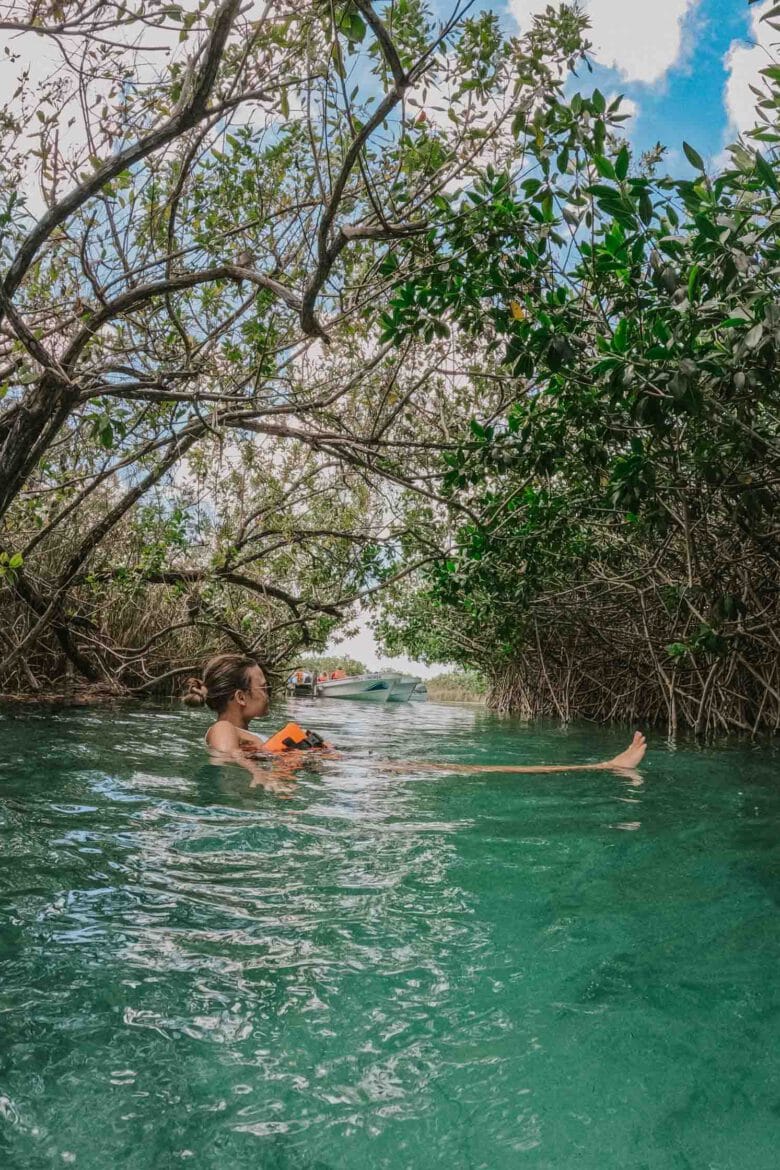Introduction
Cenotes are one of the most stunning natural wonders you’ll find in Mexico, particularly in the Yucatán Peninsula. For adventure seekers and diving enthusiasts, cenotes offer a unique opportunity to explore clear waters, fascinating underwater ecosystems, and historically significant sites. In this article, we will take a detailed look at cenotes, focusing on the best cenotes for diving. You will also find valuable information on safety tips, local tours, and essential practices for preserving these incredible environments.
What Are Cenotes?
Cenotes are natural sinkholes or wells formed when the limestone bedrock collapses, revealing the groundwater below. They can range from large open pools to smaller, hidden lagoons. The term “cenote” comes from the Mayan word “dz’onot,” meaning “cavern with water.”
In the Yucatán Peninsula, cenotes have geological and ecological significance. This region is largely composed of porous limestone, allowing for the creation of extensive underground rivers and aquifers. Over time, rainwater seeps through these rocks, gradually eroding them and forming breathtaking cenotes.
Cenotes have also played a crucial role in Mayan culture. They were not only vital sources of drinking water but also considered sacred entrances to the underworld or Xibalba. Many cenotes have been the site of archaeological discoveries, revealing artifacts and human remains associated with ancient rituals.
The Best Cenotes for Diving
There are numerous cenotes perfect for diving in the Yucatán Peninsula. Here are some of the best cenotes for diving:
1. Cenote Dos Ojos
Located near Tulum, Cenote Dos Ojos is famous for its crystal-clear waters and extensive underwater cave system. Divers can explore its two openings, known as “eyes,” where you will encounter breathtaking stalactites and unique rock formations. Additionally, the cenote is home to various freshwater fish, making it a vibrant diving spot.
2. Gran Cenote
Just a few minutes from Tulum, Gran Cenote boasts stunning visibility and gorgeous underwater scenery. It offers both swimming and diving experiences, with easily accessible areas for divers of all skill levels. Expect to see beautiful formations, turtles, and the famous freshwater fish as you glide through the clear waters.
3. Cenote Angelita
This cenote is not for the faint-hearted! Cenote Angelita features a fascinating phenomenon known as halocline, which creates a mixture of freshwater and salty water, resulting in a dreamy effect. Divers can experience a surreal underwater landscape with an eerie layer of mist creating an atmosphere reminiscent of a ghostly forest.
4. Cenote Calavera
Known as the “Temple of Doom,” Cenote Calavera offers an adventurous diving experience. With its unique entrance and challenging diving spots, it’s ideal for experienced divers. Surrounded by lush jungle, this cenote is not only perfect for diving but also provides stunning photographic opportunities.
5. Cenote Sak Aktun
Sak Aktun is one of the longest underwater cave systems in the world, stretching over 350 kilometers. It offers divers an opportunity to explore vast tunnels, open caverns, and crystal-clear waters. This cenote is highly regarded among cave divers due to its intricate network and historical significance.
Cenote Safety Tips
Diving in cenotes can be a thrilling experience, but safety should always come first. Here are essential safety precautions to keep in mind:
- Seek Guidance: If you’re a novice, consider hiring a certified guide who knows the area well.
- Check Equipment: Ensure your diving gear is in good condition and suitable for freshwater diving.
- Know Your Limits: If you’re an inexperienced diver, stick to shallow areas where you can comfortably manage your skills.
- Buddy System: Always dive with a partner. This is a crucial element for safety in case of emergencies.
- Respect Nature: Avoid touching rock formations and marine life as many species are considered endangered.
Local Cenote Tours
Exploring cenotes through guided tours has numerous advantages:
- Expert Knowledge: Local guides provide valuable insights into the history, geology, and ecology of the cenotes.
- Transportation: Most tours include transportation, making it easy to visit multiple cenotes without concern for navigation or parking.
- Safety: With an experienced guide, safety precautions are more thoroughly managed.
Many reputable tour companies operate in the Tulum area, offering various packages that encompass multiple cenote visits. This not only provides a comprehensive experience but also ensures you enjoy each site to the fullest.
Eco-Friendly Cenote Visits
Cenotes are fragile ecosystems, and it’s imperative to visit them responsibly. Here are some best practices for preserving cenote ecosystems:
- Rinse Off: Always rinse off before entering a cenote to remove any lotions or sunscreens that could harm aquatic life.
- Use Biodegradable Products: Opt for eco-friendly sunscreens and soaps that won’t damage the delicate ecosystem.
- Stay on Paths: Stick to designated trails to avoid damaging surrounding vegetation.
- Leave No Trace: Clean up after yourself and ensure nothing is left behind.
Planning a Cenote Itinerary
To maximize your cenote exploration, consider the following tips:
- Start Early: Many cenotes can become crowded; visiting early can help avoid large groups.
- Pack Essentials: Bring water, snacks, towels, and biodegradable products for a comfortable day.
- Mix Activities: Divers, swimmers, and snorkelers can all enjoy these vibrant spaces together. Look for cenotes that cater to various activities.
- Family-Friendly Options: For families, choose cenotes with facilities and shallow areas where children can safely swim.
Cenote Hidden Gems
Besides the popular diving spots, there are lesser-known cenotes worth discovering:
- Cenote Xcanche: This remote cenote is surrounded by lush vegetation and features a stunning waterfall.
- Cenote Sagrado: Steeped in Mayan history, this cenote was once used for ceremonial rituals, allowing visitors a glimpse into ancient traditions.
- Cenote Choo-Ha: This small, intimate cenote is perfect for a relaxing swim and features stunning rock formations and tranquil waters.
Cenote Wildlife Spotting
Cenotes are home to unique flora and fauna. While visiting, keep an eye out for:
- Fish Species: Commonly seen species include guppies, catfish, and even some endangered species such as the Yucatán blind eel.
- Birdwatching: This area is rich in avian life, including swallows and other tropical birds.
- Turtles and Iguanas: Many resident turtles can be spotted basking around the cenotes, along with iguanas sunbathing on the rocks.
Best Times to Visit Cenotes
The best time to visit cenotes can depend on various factors:
- Dry Season (November – April): Expect pleasant weather, making it ideal for outdoor activities.
- Wet Season (May – October): While cenotes can be less crowded, increased rain can lead to murky waters. Check conditions before planning your diving trip.
- Early Morning or Late Afternoon: To avoid crowds and enjoy cooler temperatures, plan your visits during these times.
Conclusion
Cenotes are not just places to dive; they are immersive experiences that bridge the gap between adventure, history, and nature. Exploring these unique ecosystems provides a breathtaking perspective on the natural world and the ancient cultures that revered them.
If you’re looking for the perfect base for your cenote adventures, consider booking a stay at Casa Nalum. Our beachfront villa in Sian Ka’an, Quintana Roo, is ideally located near some of the best cenotes for diving and exploration. Enjoy luxurious amenities like a private pool, spacious rooms, and attentive concierge services during your stay. Don’t miss out on an unforgettable vacation; book now at www.casanalum.com.


